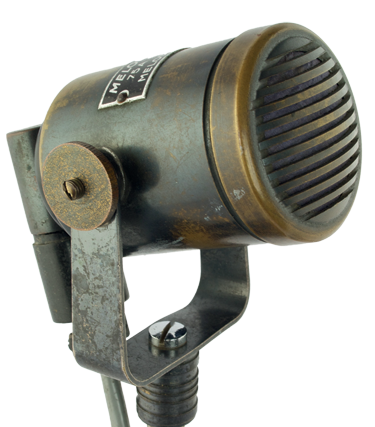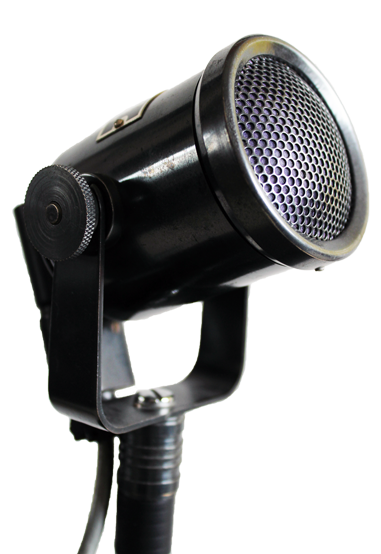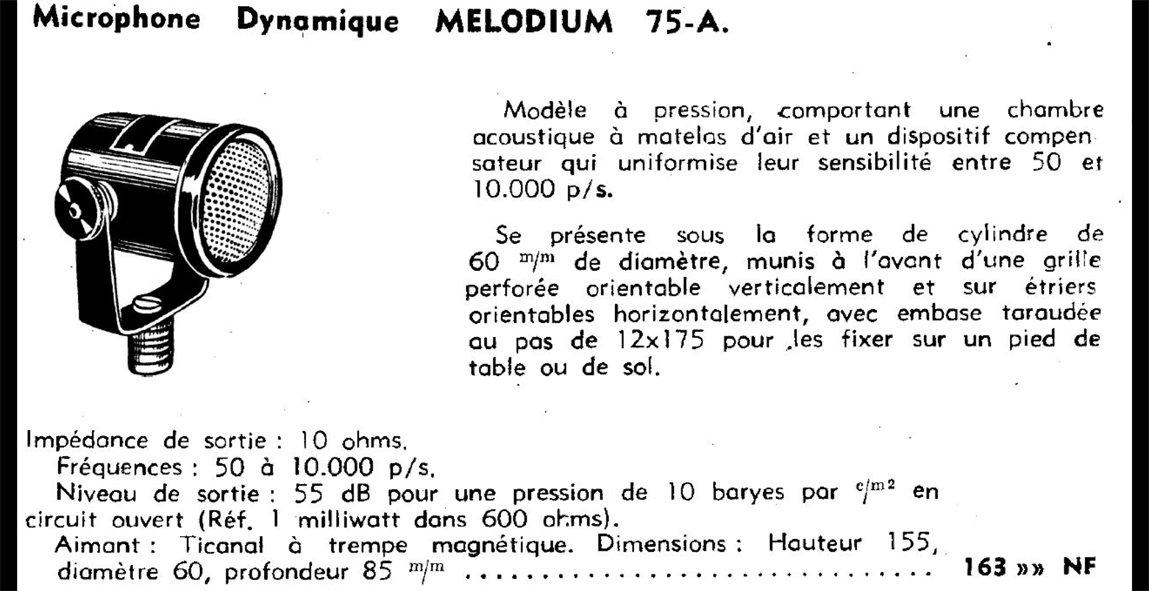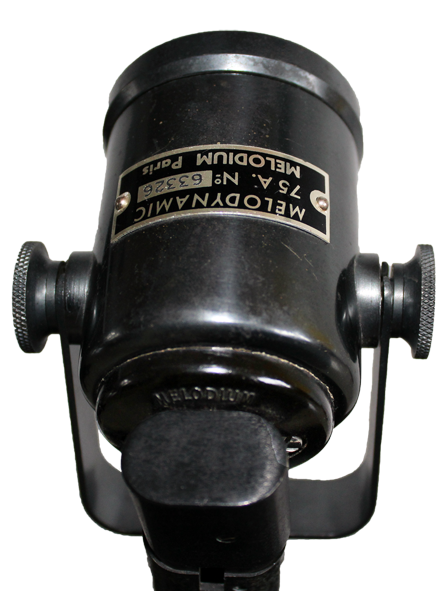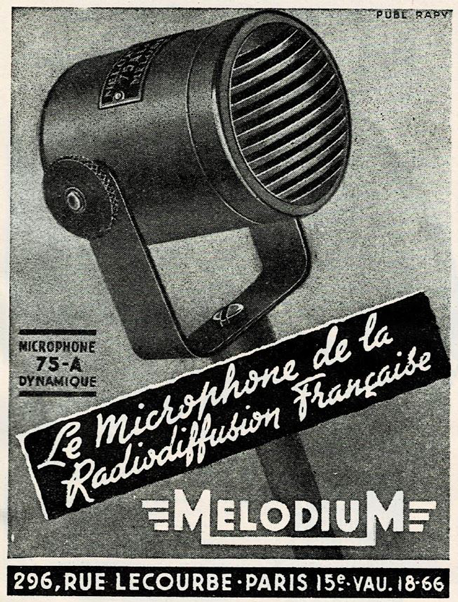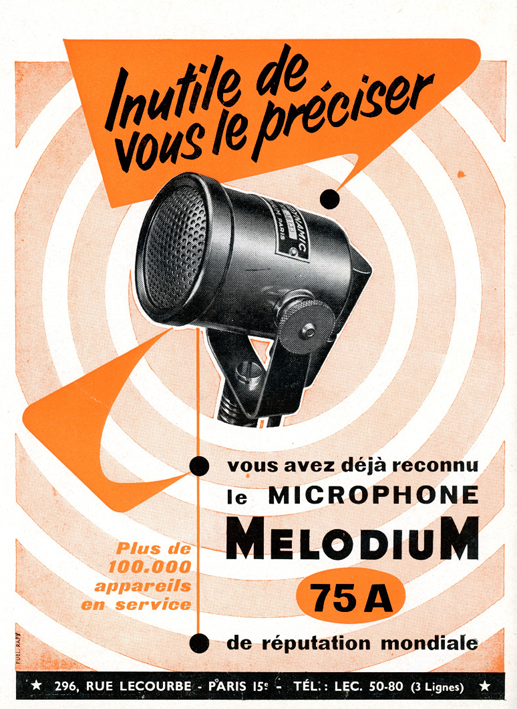|
The Melodynamic Melodium 75 A, omidirectional dynamic microphone, from Paris, France, plays an important role in French 20th century history. It was introduced around 1935 and would stay in use for decades, at least until 1968, but probably even longer, into the seventies.
The shape of the 75 A is not very original: it is a 'searchlight' type, the design was definitely inspired by the Western Electric 618, the first dynamic, from 1931. Different were the elongated body and the horizontal slitted grill, which was later replaced by a more common wire mesh grill for the second version of this model, from 1947.
The 75 A was the microphone of choice for French national radio the 'Radiodiffusion Francaise', and it would serve in this role for a very long time. The microphone was used both in the studio and outdoors. Indoors the Melodium 42 B ribbon became first choice after Melodium had expanded their portfolio with this large ribbon microphone, which can be compared with the British BBC type A (XBT) and the American RCA 44A, but the less fragile 75 A kept its important role as well, for close talking and as a spot microphone.
Like the Western Electric 618, it had a duralumin diaphragm and voice coil, a smaller in diameter, and a casing which was longer than the 618 (75 A- 60mm diameter, length 85mm without connector, WE 618- 80mm x 55mm) and it had a decent frequency reach of 50Hz to 10 kHz, with a lift at 4kHz, for extra presence.
The yoke made it easy to direct it at a sound source (omnis are directive at higher frequencies) alas the size of the thread of the mount (12 x 175) was unlike that of other microhones , which made it impossible to use it on standard mic stands. The output impedance of just 10 Ohms was also unique for Melodium; others used 50 or 200 Ohms.
They were used by radio reporters to cover sporting events such as football and horse races, since the 75 A was insensitive to wind, they were excellent for these tasks, but equally good for use as PA mic.
These microphones could be seen in front of the French president, but also at filmfestivals, where they were directed at Brigitte Bardot and other French film stars.
The 75 A was often used to pick up the unique sound of master guitarist Django Reinhardt, and it was the favourite microphone of Edith Piaf, who even took it with her on tour to the USA.
Agnes Gayraud wrote in her book 'Dialectic Of Pop': "At the end of the 1940s, her favourite stage mic was the Melodynamic Melodium 75 A, a dynamic cardioid microphone favoured in radio for its good frequency response between 200 and 3000 Hz, the range of the human voice, with a particular density in the mids and low mids that corresponded exactly to the range of `Piaf's voice, which in fact was quite limited -to an octave and a sixth- but incredibly homogeneous, concentrated in the laryngeal mechanism called the 'chest voice'. Although Piaf's voice was by no means created from scratch by the microphone, nontheless it was delivered via the microphone according to a characteristic frequency profile that was particularly favourable to its singularity."
All in all, the 75 A was one of the microphones that remained in service for the longest time, more than thirty years, even today some like to use it for its vintage sound quality.
Apart from the 75A, Melodium made the identical looking 55A, the difference was the output impedance of 50 Ohms, instead of the 75 As 10 Ohm, production of the 55A did not last long.
Melodium itself went out of business in 1987, but these days there is a Facebook group dedicated to the Melodium history, with some interesting tales.
These and many more types feature in my book Witnesses of Words. More information about that can be found at www.witnessesofwords.com
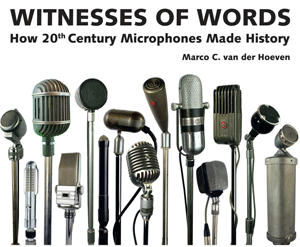
|
|
|
|
|
Top: the two different versions of the 75 A
Below: sound, specs, back and two ads
|
|
|
|
|
|
|
|


 Video's
Video's Contact
Contact


